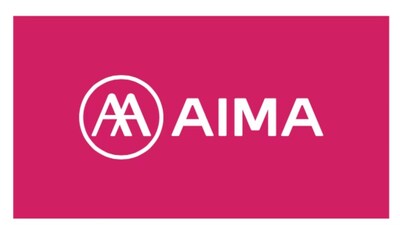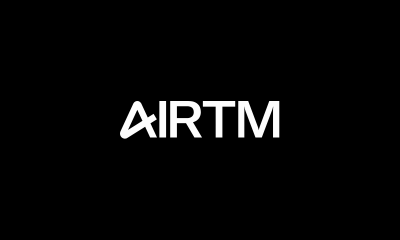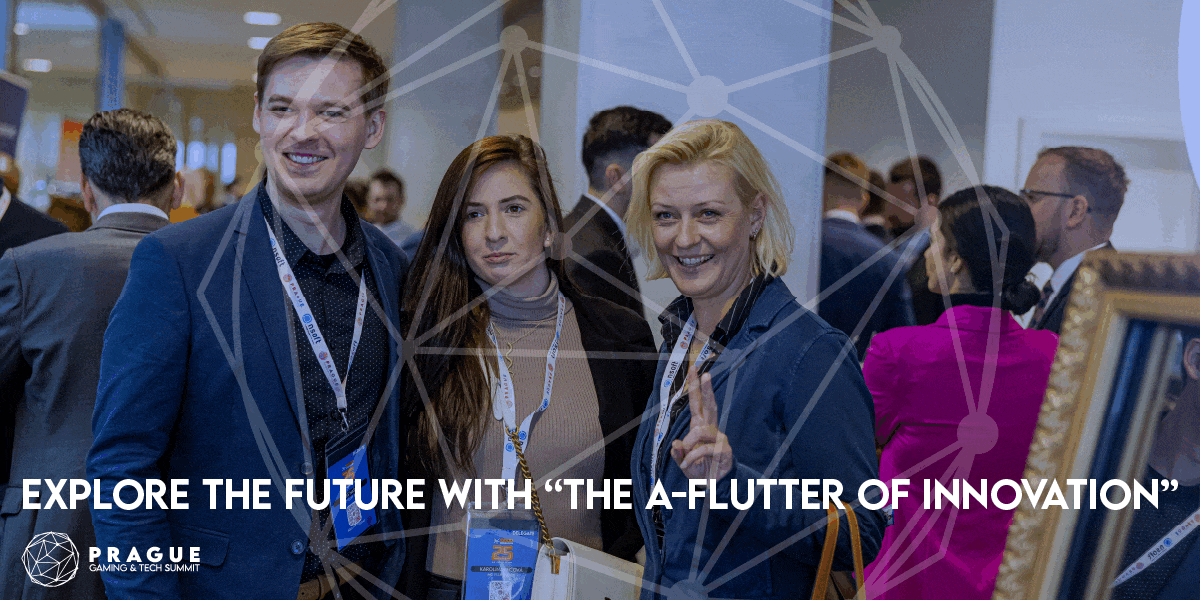Fintech PR
Squirrel AI Learning organizes Workshops at the ASU+GSV Global Educational Technology Summit for an In-depth Discussion on the Development and Future Innovation of AI+ Education

Lately, the tenth ASU+GSV Global Educational Technology Summit was held in San Diego, CA, USA. Co-founded in 2010 by the Arizona State University (ASU) and Global Silicon Valley (GSV), the ASU+GSV Summit aims to improve learning and career outcomes by promoting innovations on a large scale. It is a high-level grand event on educational technology in the USA and even the world.
Derek Haoyang Li, the founder of Squirrel AI Learning by Yixue Group, was invited to attend this year’s ASU+GSV Summit, where he made comprehensive discussions on educational technology innovations with more than 4,500 educational technology experts from all over the world. The Squirrel AI Learning team organized two workshops during the summit for an in-depth discussion on the future development and innovation of AI+ education with other participants at the ASU+GSV Summit.
AI Education Standardization
The first workshop was held to discuss the opportunities for standardization of AI in education based on the IEEE’s adaptive instructional system.
The attendees of the workshop include:
- Richard Tong, Chief Architect of Squirrel AI Learning;
- Bob Sottilare, Chair of IEEE AIS Workgroup, Science Director, Intelligent Training at Soar Tech
- Avron Barr, Chair of IEEE Learning Technology Standards Committee
- Robby Robson, Member of Board of Governors IEEE Standards Association (IEEE-SA) and former Chair of IEEE AIS Workgroup, Science Director, Intelligent Training at Soar Tech
At the workshop, the four speakers presented and discussed the current status of the IEEE-related adaptive instruction system, including its design, standardization and best practices. They analyzed the opportunities for applying standardization components and procedures, including AI adaptive learning technology, AI-based recommendation engine and a machine learning-based system used to simulate students’ interactions and preferences to improve their learning outcomes, to the AI education system.
Richard Tong: AI redefines the Education Industry
As an addresser, Richard Tong, chief architect of Squirrel AI Learning, gave a speech on the significance and implications of applying AI to education.
In Richard’s view, educational technology influences the industry in the following four technical aspects:
- Substitution, like a transition from the blackboard to the whiteboard;
- Enhancement, with a technology replacing something existing;
- Modification, with learning paths offered, such as behavior or project-based learning
- Redefinition.
Richard further explained, “In our opinion, what AI is to do is redefine. Redefinition means that we are actually changing the educational paradigm, and the whole process has in effect been changed. Therefore, we don’t aim to develop a learning model like an assembly line, but to make an individualized model that is truly extendable. We have seen in our work the significance of AI to education, and that’s why we have come with all commitments for standardization. ”
According to Richard, the successful implementation of AI calls for four elements: business model, professional knowledge, data and computing. Computing power is a broad concept, reflected not only in the number of GPUs and cloud services, but also in stacks and basic computing facilities.
Robby Robson: Why must the adaptive instructional system (AIS) be standardized?
Robby Robson, Member of Board of Governors of IEEE Standards Association (IEEE-SA) and former Chair of IEEE AIS Workgroup, gave a speech on the significance and implications of standardizing the AIS.
According to Robby, there are three important goals of standardization.
- To reduce the friction in the supply chain. From a perspective of business, standards can cut down consumption costs and stimulate producers to make innovations. All innovations and paradigm shifts can be promoted with standardization.
- To help the industry better identify the quality of technology. Due to its very high popularity, the word AI has become a marketing hype. Bob Sottilare criticized many education providers for exaggerating the role of AI, and pointed out that they just regarded AI as a tool for contextual marketing.
- To provide baselines for research and analysis.
Robby also gave a brief presentation of the background of IEEE. As a huge global organization, IEEE has more than 450,000 members and many associations for different discipline categories. Robson’s employer IEEE-SA is a global agency made up of more than 7,000 members and more than 300 corporate members. IEEE-SA focuses on industrially recognized standards, and it is concerned about their application to the market and market interdependence, and provides relevant legal and ethical protection.
Avron Barr: The key to the implementation of AI lies in data reorganization and integration
Avron Barr, Chair of IEEE Learning Technology Standards Committee, gave a speech on the data of the AIS. He said, “The market must adjust itself to make the AIS and other AI AI-enhanced products economically viable, but the key issue is: where is the data required for all these AI systems?”
To support an open, AI-based ecosystem, the whole society must build new basic facilities to recollect, share and integrate data. The data comes mainly from five main areas: identity management (personal information), qualifications (capabilities), history (what was done in the past, and what needs to be done subjectively), activity data (e.g., the information on social media, geographical information, etc.), and content. All relevant data owners, such as schools, governments, school districts and businesses, need to get involved to share their data with others to form a large-scale database.
According to Avron, the IEEE Learning Technology Standards Committee has got involved in the establishment of many standards, including the SCORM (Sharable Content Object Reference Model) ten-year update, xAPI 2.0, student data governance and federal machine learning.
Bob Sottilare: Adaptive System Standards and Practices
The adaptive system is a computer-based program that can be used to guide learning in accordance with every learner or team’s objective, demand and preference. It recommends an intelligent tutoring system, intelligent instructor and intelligent medium.
As the Chair of IEEE AIS Workgroup, Bob welcomed educators to his work to develop conceptual approaches, set interoperability criteria and recommend practical methods to teachers.
At the workshop, Richard Tong introduced some of the activities and conferences on AI and education to be held this year:
ICICLE 2019 (2019 ICICLE Conference on Learning Engineering) will be held in Ellington, Virginia from May 20th to May 23rd. The conference will focus on learning engineering, make an in-depth discussion on learning, knowledge-based learning experience design, learning conditions and support technologies, and touch upon how the emerging learning engineering can solve the issues of privacy and personalization.
AIAED 2019 (2019 Artificial Intelligence + Adaptive Education) will be held in Beijing from May 24th to 25th. This international forum, held for academic researchers and industry leaders, will focus on AI and other important technologies applied to the next generation of education and how these technologies will influence human adaptive learning.
AIED 2019 (International Conference on Artificial Intelligence in Education), will be held in Chicago from June 25th to 29th. Themed by “Education for All People in the 21st Century”, and the conference will focus on how AI and advanced technologies can be used to implement equal education among all people.
IJCAI 2019 Workshop: AI-based multi-modal analysis, used to understand human learning at realistic educational environment workshops.
Knowledge Structure-based AIS
The speaker at the second workshop was Dr. Dan Bindman, Chief Data Scientist of Squirrel AI Learning.
Dr. Bindman graduated from Mathematical Behavioral Science Institute, University of California-Irvine with a doctor’s degree in 2002. Later, he joined ALEKS, a leading provider of online adaptive learning in the USA, concentrating on mathematics and chemistry, and became the editorial director and chief architect of ALEKS math products. He joined Squirrel AI Learning in 2018.
Dr. Dan Bindman’s speech was titled “Understanding the Advantages and Disadvantages of the Knowledge Structure-based Adaptive Instructional System, and New Ways to Address the Disadvantages” and divided into two parts:
First, he pointed out the advantages and disadvantages of the knowledge structure-based adaptive learning model, and expounded the knowledge point structure and knowledge point state, as well as their differences and the logical links in the knowledge point structure.
Then, he highlighted the PKS optimization model he had developed. Composed of multi-layered student ability groups and more than 20,000 model parameters, the PKS model can accurately judge individual students and groups’ real-time learning status and provide personalized learning content for each of them. It can remove the weaknesses of many similar systems with all their advantages retained.
What is a knowledge structure?
A knowledge structure is essentially a bridge among all problems in a course. For example, a typical algebra course may contain 500-1,000 problems (i.e., “knowledge points”). One problem may involve an “equation”, while another may involve the “calculation of a slope”.
Problems that are highly related to each other can be linked together. If all such problems are linked together in one course, they can form a knowledge structure, which plays a key role in effectively assessing students’ knowledge and learning capacity.
What is a knowledge state?
Students’ knowledge states can be expressed as a vector that represents the knowledge or their mastery of all problems in a course. It is worth noting that Students’ knowledge states are binary for all problems, i.e., “known” or “unknown”, or seen as “1” or “0”.
For example, a course contains 1000 problems, and students’ mastery of knowledge can be expressed as {0,1,1,……,1,1} through the vector.
What’s the relationship between the knowledge states and knowledge structure?
It depends on whether there is a connection among different problems. Dr. Bindman enumerated two extreme possibilities: “completely unconnected” and “completely interconnected”.
Suppose there are 3 problems in a course. If the problems are completely unconnected, the likelihood that a student masters these problems is equal to “3 squared”, i.e., 8, ({0,0,0}, {0,0,1}…{1,1,1}).
However, if the three problems are interconnected with difficulty increasing progressively, it means that the student will have little difficulty solving easy problems if he overcomes the difficult problem. The number of his knowledge points can be reduced to 4: ({0,0,0}, {1,0,0}, {1,1,0}, {1,1,1}).
By analogy, we can guess that there will be fewer knowledge states if problems are more interconnected; on the contrary, there will be more knowledge states if problems are less interconnected.
So Dr. Bindman asked another question: how many questions do you need to ask to understand a student’s knowledge states?
Based on the above conclusion, if problems are completely unconnected, you need to ask 1,000 questions to get the answer; on the contrary, if problems are related to each other with difficulty increasing progressively, you just need to ask 10 questions: Ask the 500th question first. If the student gives a correct answer, continue to ask him a more difficult ones: the 750th; if he fails to give a correct answer, continue to ask him an easier one selected from the medians.
How to apply the knowledge structure to adaptive learning?
In view of Dr. Bindman’s introduction, the knowledge structure links different problems together, and a student must master some essential knowledge before beginning to learn a particular problem. Besides, the knowledge structure can greatly reduce the number of questions asked to assess the student’s mastery of knowledge. Of course, an issue will therefore arise: the knowledge structure must contain a lot of connections if it is used to assess a student’s knowledge states.
The connections can also be divided into different types: logical connections and experiential connections. The former is based on the logical relationship among problem contents; the latter is based on the correlation of probabilistic data among problems. The above is a conclusion drawn based on data collected. For example, a student who can solve problem A can also solve problem B. That’s an experiential connection.
Why is an experiential connection important? This is because logical connection features sparse data, and you don’t have enough experts to do manual annotations. An experiential connection can generate a lot of data, although problems still arise, because some experiential connections are inconsistent in sequence with textbook knowledge.
Another challenge posed by the knowledge structure comes from forms of curriculum. If a student guesses right a lot of questions, there will be something wrong with the knowledge structure-based assessment. Relatively speaking, the knowledge structure is applicable to courses in mathematics, chemistry and physics because there are many fill-in questions in such courses; on the contrary, it does not apply to courses in Chinese or English due to a large number of choice questions.
The last challenge comes from nature of the knowledge structure itself. Mastering knowledge is not absolutely a binary problem. For some knowledge, you can solve problems even if you just master 80% or 60% of it. In this case, the knowledge structure cannot accurately assess whether you have mastered the relevant knowledge points.
In summary, Dr. Bindman drew the following conclusion: in the adaptive learning area, the knowledge structure can be a very powerful tool, but there remain lots of difficulties to overcome:
- There must be enough connections that can be used to assess students’ knowledge states, and a large amount of data needs to be collected for specific group of people;
- For some users, there may be something wrong with the experiential connections in the database because its learning process is inconsistent in sequence with students’ learning process and the teaching process in the textbook;
- The knowledge structure does not apply to multiple-choice questions, so many courses are basically excluded;
- Finally, the knowledge structure has limited capabilities in prediction, and both knowledge and connections are binary, while there is no intermediate zone.
To solve these problems, Dr. Bindman has designed a model: PKS.
What is PKS?
PKS is an abbreviation for Probabilistic Knowledge State. Compared with the binary system, expressed as “1” or “0”, Dr. Bindman suggested expressing a student’s knowledge states with the probability of answering every question correctly at a specific time, such as {0.29, 0.87, 0.63, 0.74……}.
Any student’s PKS at any time is entirely determined by his ability in the “knowledge channel”. The knowledge channel is a pure mathematical structure during model fitting. Dr. Bindman said that he didn’t know what they represented, but after fitting, researchers could be inspired after getting to know that for a problem, which channels were very important, while which were not.
Dr. Bindman said, “You know that the knowledge channel is a block box, i.e., you don’t know how it works internally. In a sense, it’s similar to principal component analysis.”
PKS is determined by three variables: students’ ability A(t) to answer questions within the prescribed time t; question weight W(q), i.e., the correlation of the question to the knowledge channel; question core C(q), which can be understood as Bias. The value of PKS is PKS(q) = Phi[A(t)xW(q)+C(q)]], where “Phi” is a normal cumulative distribution function; “.” represents vector dot product.
This method can enable you to apply this formula to all problems at any time. You can make parallel use of this equation within time t in order to gain complete PKS for all problems at any time.
Another advantage of PKS is that students’ learning history can be fully used. When a student starts a course, he has to develop all his abilities from scratch; as he keeps learning, the model will adjust its parameters by reference to his learning history and then make a more accurate assessment of his abilities.
According to Dr. Bindman, Squirrel AI Learning by Yixue Group has started applying the PKS model to middle school mathematics teaching.
SOURCE Squirrel AI Learning
Fintech PR
2025 Will See Increased QR Code Payments but Payment Card IC ASPs Will Not Return to Pre-Covid Levels
ABI Research’s 5th annual Trend Report identifies the key Digital Payment Technologies trend that will come to fruition —and the 1 that won’t—in 2025
NEW YORK, Dec. 24, 2024 /PRNewswire/ — As 2025 kicks off, predictions abound on the technology innovations expected in the year ahead. In its new whitepaper, 101 Technology Trends That Will—and Won’t—Shape 2025, analysts from global technology intelligence firm ABI Research. ABI Research analysts identify 54 trends that will shape the technology market and 47 others that, although attracting vast amounts of speculation and commentary, are less likely to move the needle over the next twelve months. In the Digital Payment Technologies space, 2025 will see increased QR code payment acceptance but little growth for payment card IC ASPs.
“2024 has been marked by challenges, from global conflicts and inflationary pressures to political uncertainty. These factors have strained enterprise and consumer spending, leading to market inertia, short-term technology investments, sidelined capital, and the exposure of vulnerable suppliers,” says Stuart Carlaw, Chief Research Officer at ABI Research. “From a technology perspective, many industries and end markets are in that awkward stage of technology adoption where they are formulating implementation strategies, assessing solutions and partners, and trying to see if they have the resources needed to roll out solutions at scale. This is a particularly sensitive time, which tends to suggest 2025 will have tech implementers and end users on the brink of a period of a massive technology shift as they work through these issues.”
What Will Happen in 2025:
QR code payment acceptance will continue to increase with use cases expanding
Although QR code payment acceptance is prevalent in countries such as China and growing in emerging digital payment markets, including in India, use cases and potential growth areas are not limited to these countries. Significant and continued investments by vendors, including PayPal, Stripe, and SumUp, are setting the foundation for increased adoption in other mature and established economies with use cases expanding. Although QR codes are already being used by many Small and Medium Enterprises (SMEs) and pop-up retail businesses, 2025 will mark the year when the technology begins to shift from one niche to partial mainstream.
What Won’t Happen in 2025:
Payment card IC ASPs will not return to pre-COVID-19 levels
Since the COVID-19 pandemic, chipset pricing has been on a continual rise, driven by increased pricing in myriad manufacturing areas, including energy, raw material, transit pricing, and inflation, driving up wages. The chip shortage further compounded this, and according to ABI Research, the Average Selling Price (ASP) for a payment card Integrated Circuit (IC) increased by approximately +30% between 2020 and 2023. However, despite pricing pressures returning, the cost of payment ICs is some years away from matching pre-COVID-19 levels. Although 2025 will mark another year of pricing deprecation, it will not be until around 2028 when pricing is expected to drop to levels similar to those achieved in 2019 steadily.
For more trends that will and won’t happen in 2025, download the whitepaper, 101 Technology Trends That Will—and Won’t—Shape 2025.
About ABI Research
ABI Research is a global technology intelligence firm uniquely positioned at the intersection of technology solution providers and end-market companies. We serve as the bridge that seamlessly connects these two segments by providing exclusive research and expert guidance to drive successful technology implementations and deliver strategies proven to attract and retain customers.
ABI Research是一家全球性的技术情报公司,拥有得天独厚的优势,充当终端市场公司和技术解决方案提供商之间的桥梁,通过提供独家研究和专业性指导,推动成功的技术实施和提供经证明可吸引和留住客户的战略,无缝连接这两大主体。
For more information about ABI Research’s services, contact us at +1.516.624.2500 in the Americas, +44.203.326.0140 in Europe, +65.6592.0290 in Asia-Pacific, or visit www.abiresearch.com.
Contact Info:
Global
Deborah Petrara
Tel: +1.516.624.2558
[email protected]
Logo – https://mma.prnewswire.com/media/2309035/ABI_Research_2024.jpg
![]() View original content:https://www.prnewswire.co.uk/news-releases/2025-will-see-increased-qr-code-payments-but-payment-card-ic-asps-will-not-return-to-pre-covid-levels-302338531.html
View original content:https://www.prnewswire.co.uk/news-releases/2025-will-see-increased-qr-code-payments-but-payment-card-ic-asps-will-not-return-to-pre-covid-levels-302338531.html

Fintech PR
Bybit Champions Web3 Innovation and Strengthens Ties with Asia’s Crypto Community at Taipei Blockchain Week

DUBAI, UAE, Dec. 24, 2024 /PRNewswire/ — Bybit, the world’s second-largest cryptocurrency exchange, debuted at the Taipei Blockchain Week Dec. 12 to 14, 2024, spotlighting the vibrant Web3 innovations on its platform alongside a dynamic roster of its strategic Layer 1 ecosystem partners.
Featuring side events in collaboration with the Solana Foundation, the Sui Foundation, and a dazzling lineup of multichain projects, Bybit Web3 dedicated the Taipei tour to building up communities and deepening connections with Web3 ecosystem partners. The Bybit delegation also took the stage to uncover the latest insights on Web3, building with a purpose, and the future of blockchain utilities and DeFi.
Purpose, Innovation, and Partnerships
Representing Bybit at the conference were MK Chin, Core Contributor for Blockchain for Good Alliance and Head of Marketing of Bybit Web3, and Angela Huang, Bybit VIP Relationship Manager, at various panels.
Expanding on blockchain technology’s potential in building better realities for all, Chin joined as a panellist in the session Marketing Web3: Strategies to Engage and Onboard the Next Billion Users. Chin shared learnings and actionable insights from the Bybit-supported Blockchain for Good initiative (BGA), elaborating on both real-world utilities of blockchain technologies and the trickling down of benefits to grassroot communities.
Meanwhile, Angela Huang moderated three sessions closely tied to Bybit’s mission, steering conversations on crucial industry topics:
- The panel Bridging TradFi and DeFi: The Exchange’s Role in User Onboarding on Dec. 12 examined how exchanges could elevate access to the digital economy for users at scale.
- On Dec. 13, Networked Intelligence: The Rise of Decentralized AI explored the intersection of blockchain and AI, showcasing their potential to transform and democratize finance.
- The Building for Impact: How Female Founders Drive Purpose-Driven Innovation panel on Dec. 14 highlighted the evolving role of women leaders in driving solution-oriented innovation.
Another highlight at the event was amplified globally via Bybit Livestream. Collaborating with the Sui Foundation, Ondo, DeepBook, Scallop, NAVI, and other leading projects, Bybit Web3 led a critical debate on the future of Sui’s growth strategy: Sui Ecosystem Showdown: Mass Adoption vs. Native Growth. Hosted by Emily Bao, Head of Web3 and Spot at Bybit, the livestream attracted over 6,500 viewers live at the Taipei Blockchain Week and globally on Dec. 13.
Deepening Bonds: Key Web3 Ecosystems and Communities
Bybit Web3 brought the local community closer to its world-class ecosystem partners with engaging community events, co-hosting Taiwan DeFi Flow with Sui and Scallop on Dec. 12, and Solana Ecosystem Taipei Greetings with the Solana Foundation and Solar with the support of Orderly Network, Zetachain, Jupiter, and Sonic, on Dec. 14. Through collaborations and innovation, Bybit Web3 opens up new on-chain possibilities for partners and stakeholders to expand the Web3 universe.
These relaxed evening gatherings provided a convivial backdrop for like-minded builders and entrepreneurs to network, exchange ideas, and celebrate their shared enthusiasm for DeFi and dApps in Asia’s growing Web3 innovation hub.
“It’s been an incredible experience connecting with the builders, believers, users, creators, and supporters driving innovation on Solana and Sui. These moments remind us of the heart and spirit of Web3—a vibrant ecosystem shaped by collaboration and shared vision. I’m deeply proud to witness this growth, grateful for every connection made, and excited for the road ahead,” said MK Chin, Core Contributor for Blockchain for Good Alliance and Head of Marketing of Bybit Web3.
“Taipei Blockchain Week showcased the immense growth and potential of Web3 innovation in Asia. Representing Bybit, I had the honor to collaborate with industry leaders to explore Web3’s limitless possibilities, from DeFi and AI to real-world applications. Together, we are shaping a more inclusive global crypto community,” said Angela Huang, Bybit VIP Relationship Manager.
In the past year, Bybit has seen exponential growth in its user base, surging to over 60 million by the end of 2024. It has also invested in vertical growth through community engagements across the world. Connected by the passion for the future of crypto, blockchain, and Web3, the Bybit family is on track to building an inclusive and sustainable path to growth for the industry.

#Bybit / #TheCryptoArk / #BybitWeb3
About Bybit Web3
Bybit Web3 is redefining openness in the decentralized world, creating a simpler, open, and equal ecosystem for everyone. We are committed to welcoming builders, creators, and partners in the blockchain space, extending an invitation to both crypto enthusiasts and the curious, with a community of over 130 million wallet addresses across over 30 major ecosystem partners, and counting.
Bybit Web3 provides a comprehensive suite of Web3 products designed to make accessing, swapping, collecting and growing Web3 assets as open and simple as possible. Our wallets, marketplaces and platforms are all backed by the security and expertise that define Bybit as the world’s second-largest cryptocurrency exchange by trading volume, trusted by over 50 million users globally.
Join the revolution now and open the door to your Web3 future with Bybit.
For more details about Bybit Web3, please visit Bybit Web3.
About Bybit
Bybit is the world’s second-largest cryptocurrency exchange by trading volume, serving a global community of over 60 million users. Founded in 2018, Bybit is redefining openness in the decentralized world by creating a simpler, open and equal ecosystem for everyone. With a strong focus on Web3, Bybit partners strategically with leading blockchain protocols to provide robust infrastructure and drive on-chain innovation. Renowned for its secure custody, diverse marketplaces, intuitive user experience, and advanced blockchain tools, Bybit bridges the gap between TradFi and DeFi, empowering builders, creators, and enthusiasts to unlock the full potential of Web3. Discover the future of decentralized finance at Bybit.com.
For more details about Bybit, please visit Bybit Press
For media inquiries, please contact: [email protected]
For updates, please follow: Bybit’s Communities and Social Media
Discord | Facebook | Instagram | LinkedIn | Reddit | Telegram | TikTok | X | Youtube

Photo – https://mma.prnewswire.com/media/2587313/1.jpg
Photo – https://mma.prnewswire.com/media/2587314/2.jpg
Logo – https://mma.prnewswire.com/media/2267288/Logo.jpg
![]() View original content:https://www.prnewswire.co.uk/news-releases/bybit-champions-web3-innovation-and-strengthens-ties-with-asias-crypto-community-at-taipei-blockchain-week-302338874.html
View original content:https://www.prnewswire.co.uk/news-releases/bybit-champions-web3-innovation-and-strengthens-ties-with-asias-crypto-community-at-taipei-blockchain-week-302338874.html

Fintech PR
AIMA Technology Welcomes Top U.S. Dealers to Shape the Future Together

TIANJIN, China, Dec. 24, 2024 /PRNewswire/ — On December 7, 2024, AIMA Technology Group warmly invited a delegation of five top-performing U.S. IBD dealers to visit its headquarters. Accompanying the group was Angela Zheng, CEO of AIMA’s U.S. subsidiary, AIMA EBIKE, along with her sales, marketing, and customer service teams. This visit not only marked a deepened connection between AIMA and the mainstream U.S. market but also provided U.S. dealers with a valuable opportunity to witness AIMA Technology’s globally leading capabilities in research, development, and manufacturing of electric mobility solutions.
The delegation first toured AIMA’s state-of-the-art factory in Tianjin. Aima Technology possesses production factories with extremely high levels of intelligent manufacturing Additionally, AIMA has integrated advanced technologies such as AI visual recognition and established a CNAS-certified R&D laboratory, maintaining its industry leadership in intelligent transformation. During the tour, the dealers were deeply impressed by AIMA’s cutting-edge technology, large-scale production capabilities, and relentless pursuit of excellence in product development and manufacturing. They expressed that this rare visit not only enhanced their understanding of AIMA but also strengthened their confidence in promoting AIMA products as a symbol of outstanding performance and exceptional quality to their customers.
Furthermore, AIMA Technology’s R&D team engaged in in-depth discussions with the dealers regarding the new models AIMA EBIKE plans to launch in 2025. The dealers test-rode prototypes of the latest models and shared their innovative insights. They expressed high praise for AIMA’s product innovation capabilities and market acumen, recognizing these as key factors that distinguish AIMA in the industry.
Later, the dealers joined AIMA Technology’s team to witness the rollout of the 10,000th AIMA E-Bike. This milestone moment showcased AIMA’s exceptional manufacturing strength and market influence. The dealers were inspired and expressed strong confidence in the promising future of their partnership with AIMA.
This visit from the top-tier U.S. dealer delegation not only deepened mutual trust and friendship but also injected new momentum into AIMA’s ambition to become a leader in the U.S. E-Bike industry by focusing on the IBD channel. Looking ahead, AIMA Technology will continue to strive to provide market-leading performance and quality, enhancing its product development and manufacturing capabilities while working hand-in-hand with global dealers to create an even brighter future.


Photo – https://mma.prnewswire.com/media/2586564/1.jpg
Photo – https://mma.prnewswire.com/media/2586566/2.jpg
Logo – https://mma.prnewswire.com/media/2449955/AIMA_Technology_Logo.jpg
![]() View original content:https://www.prnewswire.co.uk/news-releases/aima-technology-welcomes-top-us-dealers-to-shape-the-future-together-302338745.html
View original content:https://www.prnewswire.co.uk/news-releases/aima-technology-welcomes-top-us-dealers-to-shape-the-future-together-302338745.html

-

 Fintech5 days ago
Fintech5 days agoFintech Pulse: Your Daily Industry Brief (Chime, ZBD, MiCA)
-

 Fintech PR5 days ago
Fintech PR5 days agoAccording to Tickmill survey, 3 in 10 Britons in economic difficulty: Purchasing power down 41% since 2004
-

 Fintech6 days ago
Fintech6 days agoSPAYZ.io prepares for iFX EXPO Dubai 2025
-

 Fintech6 days ago
Fintech6 days agoAirtm Enhances Its Board of Directors with Two Strategic Appointments
-

 Fintech PR4 days ago
Fintech PR4 days agoPresident Emmerson Mnangagwa met this week with Zambia’s former Vice President and Special Envoy Enoch Kavindele to discuss SADC’s candidate for the AfDB
-

 Fintech PR2 days ago
Fintech PR2 days agoGCL Energy Technology and Ant Digital Technologies Launch First Blockchain-Based RWA Project in Photovoltaic Industry
-

 Fintech PR5 days ago
Fintech PR5 days agoStay Cyber Safe This Holiday Season: Heimdal’s Checklist for Business Security
-

 Fintech PR5 days ago
Fintech PR5 days agoMedicilon Appoints Dr. Lilly Xu as Chief Technology Officer

















